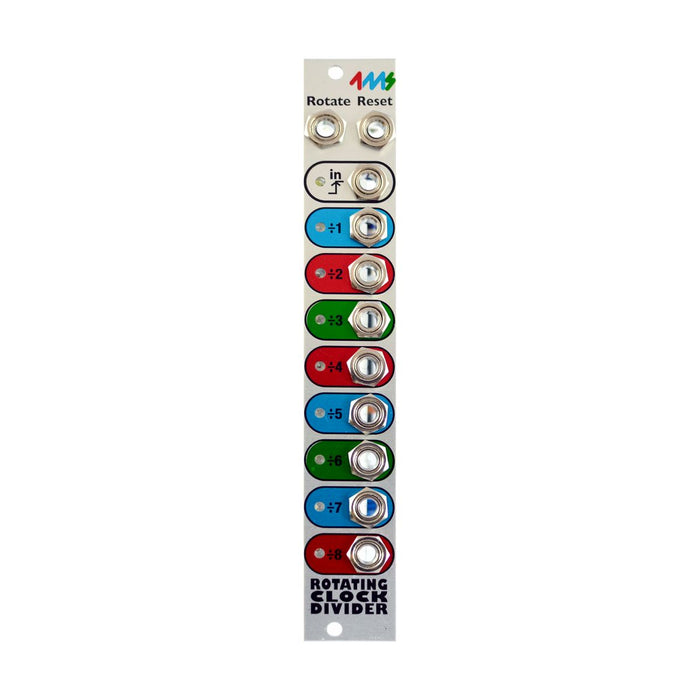
4ms Rotating Clock Divider (RCD)
Format: Eurorack
Width: 4HP
Depth: 35mm
Current: 19mA @ + 12V, 4mA @ -12V, 14mA @ + 5V
(5mA @ + 33V, 12mA @ -4V when making + 12V inside RCD by jumper setting)
Manual pdf (English)

Format: Eurorack
Width: 4HP
Depth: 35mm
Current: 19mA @ + 12V, 4mA @ -12V, 14mA @ + 5V
(5mA @ + 33V, 12mA @ -4V when making + 12V inside RCD by jumper setting)
Manual pdf (English)

The blue jumper on the top six is the jumper set in RCD. The image is the default setting for the jumper. RCD Breakout points to the cable from rcdbo in this jumper part, allowing you to change these settings on the panel.
Jumper setting of 3,4,5.The combination of number 3 and 4 determines the basic range of clock signals output from eight outputs.The range of divisions driven by the Rotation CV is also determined by number 3 or 4.
Number 5 is a jumper with "Spread Mode", and in the case of On, it outputs from eight outputs relatively evenly from a small clock to a large clock, but in the case of Off, only clocks close to the maximum number of divisions are output from eight outputs as shown in the upper table.
Jumper setting of no. 6. When on, it resets at the length according to the Divide-by Range determined by the jumper of 3 and 4.
Jumper setting of no. 7. Down-beat is a mode in which the clock begins with "ON" at the first beat of any split number of clocks. Up-beat is a mode in which the clock begins with "ON" at the last beat of each split.
Jumper setting of no. 8. If you select On, the gate signal is kept on for exactly half the time until the next ON timing after the output signal is turned on once. only for a very short period of time.